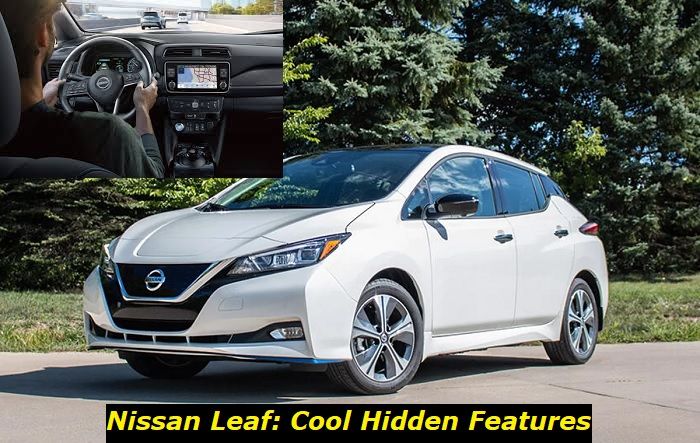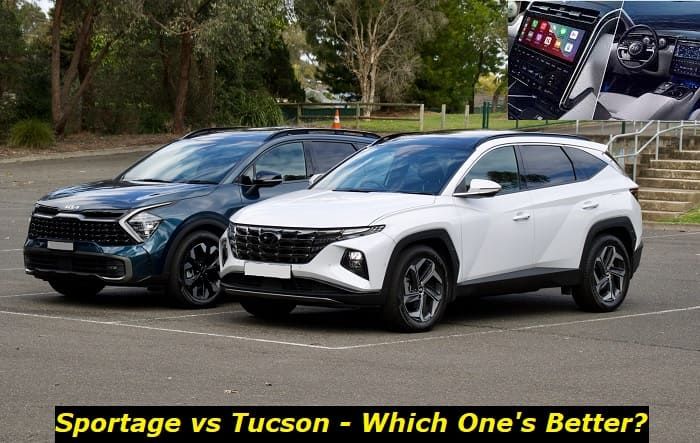Although I've already told you about the plug-in hybrid engine in the KIA Sportage which is basically the same as in the Hyundai Tucson, I want to talk more about this wonderful powerplant and give some more details. So, I've decided to introduce you to the hybrid model of the Tucson.
Today, you will learn about the 1.6L plug-in hybrid version of the Hyundai Tucson, mainly about the engine which is the key advantage of this vehicle. I will cover its common issues that are already known even though the engine is very fresh. Also, I will tell you why you may love or hate this hybrid SUV.
.jpg)
Key facts and my opinion about the engine
- Production years: 2020-now
- Average lifespan of G4FT/G4FU: 130,000-150,000 miles
- Fuel supply type: direct injection
- Power range: 180 hp
- Fuel efficiency: excellent
- Engine block material: aluminum
- Engine reliability score: low
- The most common problems: timing chain issues, catalytic converter too close to the engine block, no lifters.
What will you want to know about the 1.6L PHEV engine in the Tucson?
Well, this is not the only hybrid version of the Tucson on the American market. Now, it's also marketed with an FHEV powerplant that doesn't have the charging port and can't go all-electric. But the PHEV version has about a 10 times larger battery pack and is basically much closer to being an electric vehicle. Of course, the PHEV version of the Tucson is also more expensive - it starts at about $36,000.
The hybrid SUV is really cool in many ways. But we are going to focus exactly on the engine and electric part of the powerplant today, so we will not discuss its advantages such as comfort, design, etc.
The heart of the powerplant is the 1.6L Turbo Smartstream engine and it's paired with a pretty powerful electric motor.
Here are some key points about the Tucson PHEV:
- the gasoline engine is the new 1.6L G4FU turbocharged Smartstream unit developed to be part of the hybrid powertrain;
- the electric motor can develop over 90 horsepower and 224 lb-ft of torque and it can work independently of the gas engine;
- the overall system power is rated at 261 horsepower and the system allows you to use 258 lb-ft of torque;
- the system is equipped with a 13.8-kWh battery pack that seems to be enough for great performance and economy;
- the powerplant is equipped with a traditional automatic transmission with 6 speeds - a really good and surprisingly wise choice;
- the Tucson PHEV may go about 33 miles as an EV without even starting the gasoline engine which is an average result for such vehicles;
- the estimated combined fuel economy is rated at 80 MPG but this will vary significantly depending on your driving style and road conditions;
- to charge the battery pack from a 240V socket, you will need about 2 hours which is pretty cool.
So, you basically get an electric vehicle with a limited range of 33 miles but with a gas engine that can jump into action any time and charge your battery pack. Also, the gasoline engine can work without its electric partner and offer you great power and torque because it's a turbo Smartstream powerplant that represents the latest generation of Hyundai engines.
So, we see this powerplant as one of the most flexible and balanced solutions in the world of PHEV vehicles. The fuel economy is just insane and you can actually use your Tucson PHEV as an electric vehicle if you don't drive too much.
How long will the 1.6L PHEV engine survive?
When it comes to the longevity of the Tucson PHEV, things become a little less positive than before. The 1.6L Turbo engine is known to be quite problematic. Also, some technologies implemented in it are not yet researched properly.
I believe the gasoline engine is able to live 120,000 to 140,000 miles which is a bad result. Some common problems have already formed and are actively reported in specialized forums. Also, small displacement and the use of a turbocharger shorten the life expectancy of the engine.
The electric motor is going to live forever, so we just don't take that into account in terms of longevity.
The transmission in these PHEV SUVs is just perfect. They use the 6-speed shiftable automatic transmission by Hyundai that is not e-CVT or dual-clutch. Just a simple automatic transmission with a lot of miles and years in it without any problems.
But the battery pack may cause some issues, When the vehicle reaches about 50K miles, the battery pack will start significantly deteriorating. It means that the pack will actually lose its juice and will eventually fail to deliver the needed fuel economy. Also, the all-electric range will go worse. We believe, at 100,000 miles, you will need to replace the battery pack to keep using your Tucson PHEV with pleasure.
So, the overall longevity of the Tucson PHEV depends on the engine and the battery pack. If you spend some money and replace the battery pack at 80-100 thousand miles, the durability of the powerplant will be stretched to 130,000 miles, on average. After that, the engine may fail at any minute.
What are the common problems with the Tucson PHEV?
The Tucson plug-in hybrid vehicle uses a Li-Ion battery pack which is a little outdated. Li-Po batteries look much better in modern hybrid cars. So, the battery pack is going to die earlier than average in the industry and we think this is the problem. Batteries for Hyundai hybrids are expensive and replacing them is not something you will want to fund.
But let's look at the common issues with the engine itself:
1. Timing chain issues
The Smartstream G4FU 1.6L Turbo engine is equipped with a timing chain. It's said by Hyundai to last as long as the engine last but I can tell you this is NOT true. These chains will last up to 80,000 miles, so I recommend you replace the chain kit at 70,000 miles to avoid issues when it breaks or stretches fatally.
If the timing chain jumps or breaks, the engine may be totally ruined. I believe you will need to replace the timing chain kit at least once within the life of the engine.
2. Potential CVVD issues
We still don't know much about how the CVVD valve timing system will act in this engine because the technology is new. But it's complicated and I guess it will not last very long. This is basically the first Hyundai engine to adopt CVVD and this is bad news for you because all problems usually show up exactly in the first engines that use a new technology.
3. Catalytic converter - traditional Hyundai issue
For many years, Hyundai has been placing its catalytic converter in the exhaust manifold. From there, the converter has almost direct access to cylinders. Once the converter is dead, it may start ruining and eventually fall apart. The small ceramic parts will be sucked directly into the engine and will scratch the cylinders.
This will lead to the growth of oil consumption, harsh engine work, loss of compression, and eventually to the death of the engine.
4. Turbocharger failure
I still don't know a lot about this type of turbochargers, but we can clearly see that other Smartstream Turbo engines have pretty problematic turbos. It means that in addition to all those huge issues that may happen with this small engine, the turbocharger may ask for repair much earlier than the engine hits the 100,000-mile mark.
Also, you should know that repairing the turbocharger in a Hyundai vehicle is not cheap and fast.
So, how can you prolong the lifespan of the 1.6L Turbo PHEV?
To make your PHEV engine in the Hyundai Tucson live longer, you will need to follow some important tips on how to not kill it prematurely.
First of all, remember that any modern Hyundai engine requires proper and regular maintenance. You shouldn't buy cheap oil and bad aftermarket filters if you want longevity from your hybrid SUV. Good OEM parts and fluids are key to your success.
Also, pay attention to the health of the catalytic converter. If it fails to work properly, it's important to replace it as soon as possible. When it starts falling apart, the engine is in deadly danger.
Keep an eye on any warning lights or error messages. They will tell you about the upcoming problem that may at first seem minor. But if not dealt with timely, any minor problem with this powerplant will grow into a real horror.
We believe you should use the vehicle in different conditions and ways. If you only drive it as an EV, your gasoline engine will be sitting for too long and eventually will require repairs. So, sometimes, give it a chance to kick in and work for at least several minutes.
Also, pay attention to common rules and requirements of using a PHEV. Your new Hyundai will obviously thank you for implementing these simple habits.
About the authors
The CarAraC research team is composed of seasoned auto mechanics and automotive industry professionals, including individuals with advanced degrees and certifications in their field. Our team members boast prestigious credentials, reflecting their extensive knowledge and skills. These qualifications include: IMI: Institute of the Motor Industry, ASE-Certified Master Automobile Technicians; Coventry University, Graduate of MA in Automotive Journalism; Politecnico di Torino, Italy, MS Automotive Engineering; Ss. Cyril and Methodius University in Skopje, Mechanical University in Skopje; TOC Automotive College; DHA Suffa University, Department of Mechanical Engineering






Add comment